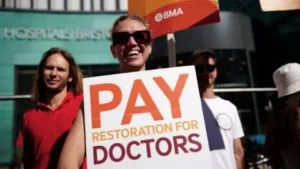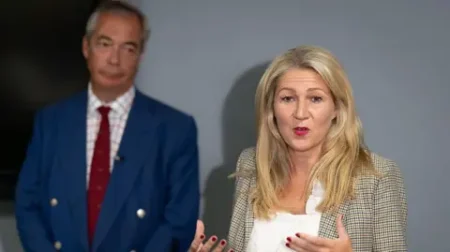The ongoing political landscape in the United States has recently been markedly affected by President Donald Trump’s plans for mass firings across various federal agencies. This ambitious initiative, which the administration refers to as a strategy for reducing the size and reach of the federal government, has hit a significant roadblock. A federal appeals court has declined the administration’s request to freeze a lower court’s order that prevented these mass layoffs, thus forcing the plans to remain on hold for the foreseeable future.
The decision rendered by the 9th Circuit Court of Appeals signals a notable setback for President Trump as he strives for a significant reduction in government workforce. This effort is part of his broader agenda to streamline government operations and minimize federal influence. The initiative, often described in government terminology as reductions in force (RIFs), entails the planned layoffs of employees from more than a dozen federal agencies. This process is designed to cut costs and operate more efficiently, according to the administration’s rationale. However, it has been met with considerable resistance and scrutiny.
The legal issues surrounding this plan began to unfold earlier in the year when US District Judge Susan Illston ruled against the Trump administration’s initiatives. Judge Illston’s ruling, delivered on May 9, established that President Trump lacks the authority to execute such dramatic restructuring of federal agencies without obtaining explicit authorization from Congress. This ruling has essentially put a halt to any immediate action associated with the mass layoffs, setting a precedent regarding the balance of power between the executive branch of government and congressional authority.
The ramifications of this ruling extend beyond just the immediate plans for firings; they reflect a broader question of executive power and oversight in the United States. The limits of presidential powers, particularly regarding significant workforce changes, have been a contentious topic in American politics. This case serves as a reminder that, while the executive branch holds considerable authority, there are still checks and balances intended to prevent overreach. Congressional authorization is necessary for significant actions that impact federal employment on this scale.
As the situation stands, the administration and its supporters have expressed disappointment with this outcome, arguing that reducing the size of the government is a necessary step towards fiscal responsibility and improved efficiency. Critics, however, view the proposed layoffs as a threat to public service and essential government functions, raising concerns about the implications for the agencies involved and the services they provide to the American people.
Moreover, this ongoing legal saga appears to be far from over, as it highlights the profound complexities of governance and the interplay between various branches of government. The implications of these judicial decisions extend beyond the current administration. Future presidents may find themselves encountering similar hurdles if they attempt to implement sweeping changes without appropriate legislative support.
In summary, President Trump’s efforts to initiate widespread layoffs across federal agencies have encountered a significant legal hurdle, with the 9th Circuit Court of Appeals upholding a decision that requires congressional authorization for such drastic measures. As the administration grapples with the implications of this ruling, it underscores the continuing importance of legal checks on executive power, as well as the broader dialogues about the size and scope of the federal government. With the promise that this story will continue to evolve, the American public, lawmakers, and government employees alike await further developments on this contentious issue.










